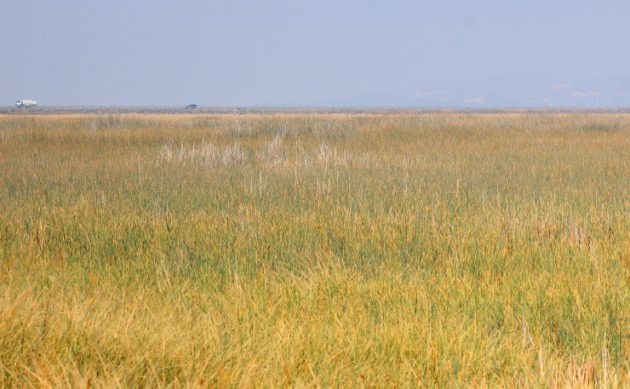
It was the month of March, 2017, when I went to Lake Cuitzeo to check up on our migratory waterfowl and shorebirds one last time before they travelled north to breed. But that time, I was shocked to find that about half the birds I had expected were missing — along with half the lake.
Lake Cuitzeo is Mexico’s second largest lake, and its uniformly shallow waters make it a powerful magnet for dabbling ducks and shorebirds. But that same shallowness makes the lake extremely vulnerable to drought, and the shallower western half sometimes dries up completely in years with low rains. Back in 2017 I was shocked to find only 15 ducks over the course of the morning, when I had hoped to find hundreds, or even thousands.
I knew that the 2020-2021 winter would be worse for the lake than the 2016-2017 winter. But I had a little hope the western half of the lake might still have some water through the New Year. Such hope was unjustified; by late November, there was no water to be seen there.

Oddly enough, this time it was the very severity of the drought that made the lake continue to work as habitat for dabbling ducks. Back in 2017, the eastern half had managed to remain too deep for the dabbling ducks, even when the western half had completely disappeared. But here in 2020, the eastern half is also suffering the effects of drought — leaving it shallow enough to keep a fair number of Teals, Pintails, and Shovelers happy. We may not be talking about the thousands of ducks I could see in a good year, but it is certainly possible to still see hundreds.


Shorebirds have taken more of a hit. I saw no Peeps (small Sandpipers), or Plovers of any size (except for many Killdeers). Normally abundant Long-billed Dowitchers and Black-necked Stilts were limited to a three small flocks flying by. But the American Avocets were more numerous than I had ever seen.

The best activity was to be found in the reedbeds along the non-tollroad lake crossing. There were large flocks of Brown-headed Cowbirds and Yellow-headed Blackbirds, with some Red-winged Blackbirds in the mix.


Down among the reeds, smaller birds could be just as exciting.


2020 has been a surprisingly great year for seeing our micro-endemic Black-polled Yellowthroat around Lake Cuitzeo. Apparently, they were there all along, but I didn’t know how to find them. I suspect the lake’s shrinking habitat options has forced them closer to the road.


So far, the eastern half of the lake still has enough water to hold on to its deeper-water denizens, including Clark’s Grebes and American Coots. A good Coot take-off can brighten up one’s day, so I’ll show those photos last.
















Leave a Comment